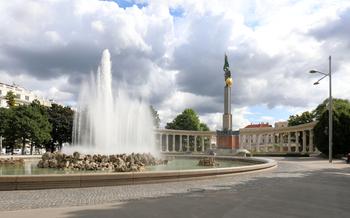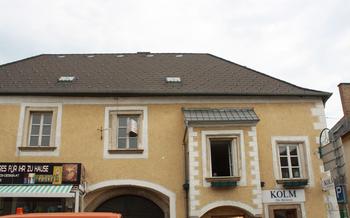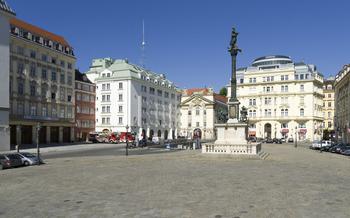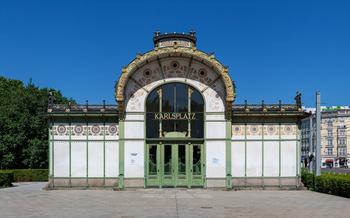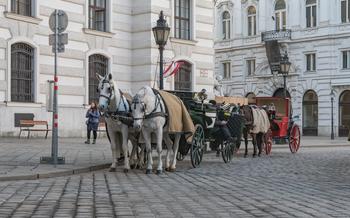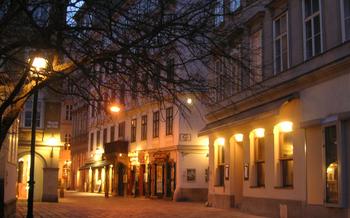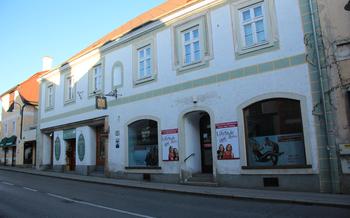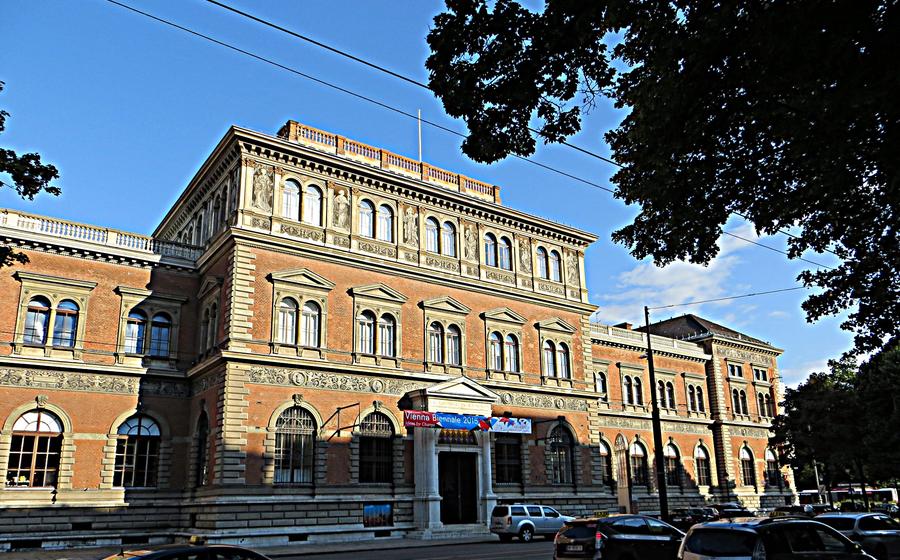
MAK Austrian Museum of Applied Arts / Contemporary Art
- MAK - Austrian Museum of Applied Arts / Contemporary Art: A Historic Overview
- MAK Permanent Collection: Exploring Masterpieces of Design
- MAK Contemporary Art Exhibitions: A Window into Modern Creativity
- MAK Study Collection: A Treasure Trove for Researchers and Designers
- MAK Design Shop: A Haven for Design Enthusiasts
- MAK Tours and Workshops: Engaging Programs for All Ages
- MAK Research and Publications: A Hub of Knowledge and Expertise
- MAK Digital: Exploring the Museum's Treasures Online
- MAK for Families: A Fun-Filled Adventure for All Ages
- MAK as a Venue for Events: A Unique Setting for Special Occasions
- MAK Membership: A World of Benefits for Art and Design Aficionados
- Viennese Modernism at the MAK
- Viennese Modernism Movement: A Legacy of Innovation
- Viennese Modernity at the MAK
MAK - Austrian Museum of Applied Arts / Contemporary Art: A Historic Overview
The MAK - Austrian Museum of Applied Arts / Contemporary Art, is a world-renowned institution dedicated to the preservation and presentation of applied and contemporary art. Founded in 1863 as the Imperial Royal Austrian Museum of Art and Industry, the MAK has a rich history that reflects the changing artistic and cultural landscape of Austria.
The museum's origins can be traced back to the 1851 Great Exhibition in London, which showcased the latest innovations in industrial design and manufacturing. Inspired by the exhibition, Emperor Franz Joseph I of Austria commissioned the establishment of a similar institution in Vienna. The MAK was thus founded to promote the development of Austrian industry and to provide a platform for the display of contemporary applied arts.
The museum's first director, Rudolf Eitelberger, was a key figure in shaping the MAK's early collection and mission. Eitelberger believed that applied arts should be elevated to the same status as fine arts, and he worked to acquire a diverse range of objects, from furniture and textiles to ceramics and metalwork. The museum's collection grew rapidly, and by the end of the 19th century, it had become one of the most important repositories of applied arts in Europe.
In the early 20th century, the MAK underwent a period of transformation. Under the leadership of directors such as Arthur von Scala and Josef Hoffmann, the museum began to focus more on contemporary art and design. This shift was reflected in the acquisition of new works by artists such as Gustav Klimt, Egon Schiele, and Oskar Kokoschka, as well as the organization of groundbreaking exhibitions on modern art and architecture.
Today, the MAK is a leading international museum of applied arts and contemporary art. Its collection spans over eight centuries, from the Middle Ages to the present day, and includes over 300,000 objects. The museum's mission is to promote understanding and appreciation of applied and contemporary art, and to foster dialogue between artists, designers, and the public.
MAK Permanent Collection: Exploring Masterpieces of Design
The MAK's permanent collection is a treasure trove of decorative arts and design, spanning from the Middle Ages to the present day. It features over 300,000 objects, including furniture, glass, ceramics, metalwork, jewelry, textiles, and fashion.
One of the highlights of the collection is the furniture and interiors section, which showcases iconic pieces from various periods and styles. Visitors can admire exquisite Renaissance cabinets, opulent Baroque furniture, and innovative Art Nouveau and Art Deco creations. The glass and ceramics collection is equally impressive, featuring delicate Venetian glass, intricate porcelain from the Habsburg court, and contemporary works by renowned glass and ceramic artists.
The metalwork and jewelry section boasts a stunning array of objects, from medieval armor and weapons to Art Nouveau jewelry and contemporary sculptures. The textiles and fashion collection includes historical and contemporary garments, as well as a comprehensive collection of lace and embroidery.
The MAK's permanent collection is not just a display of beautiful objects; it is also a testament to the evolution of design and the changing tastes and values of society. Visitors can trace the development of design from its functional roots to its current status as a form of artistic expression.
MAK Contemporary Art Exhibitions: A Window into Modern Creativity
MAK's temporary exhibitions are a dynamic platform for showcasing cutting-edge contemporary art from Austria and around the world. These exhibitions provide a glimpse into the latest trends and developments in the art world, often featuring installations, multimedia works, and experimental pieces that challenge traditional notions of art and design.
The museum collaborates with renowned artists, curators, and institutions to present thematic exhibitions that explore social, cultural, and political issues. These exhibitions often spark dialogue and debate, inviting visitors to engage with contemporary art in a meaningful way.
Recent exhibitions have included "The Future of Craft: Innovation and Tradition in Contemporary Jewelry" which showcased the work of emerging and established jewelry artists who are pushing the boundaries of the medium, and "Data as Form: New Perspectives on Information Aesthetics," which explored the intersection of art, technology, and data visualization.
MAK's contemporary art exhibitions are a testament to the museum's commitment to supporting and promoting innovative artistic practices. They offer visitors a unique opportunity to experience the latest developments in contemporary art and to engage with the ideas and concepts that are shaping the art world today.
MAK Study Collection: A Treasure Trove for Researchers and Designers
The MAK Study Collection is a hidden gem for researchers, designers, and anyone interested in the history of decorative arts, graphic design, and industrial design. With over 150,000 objects spanning from the Middle Ages to the present day, it is one of the most comprehensive collections of its kind in the world.
The collection includes furniture, glass, ceramics, metalwork, jewelry, textiles, fashion, and graphic design. It also features a significant collection of historical wallpapers, as well as a unique collection of over 200,000 postcards.
The Study Collection is a treasure trove for researchers and designers, providing a wealth of inspiration and material for their work. It is also a valuable resource for students, who can learn about the history of design and the development of different styles and techniques.
The Study Collection is open to the public by appointment, and guided tours are available for groups. The MAK also offers a variety of workshops and programs for researchers and designers, providing them with the opportunity to learn from experts in the field and to network with other professionals.
MAK Design Shop: A Haven for Design Enthusiasts
For those with a passion for design, the MAK Design Shop is a must-visit destination. This carefully curated space offers a diverse selection of design objects, books, and gifts that are sure to delight and inspire. Limited-edition items and collaborations with renowned designers make it a unique shopping experience. From home accessories and jewelry to fashion items, the shop caters to a wide range of tastes and styles. And with the convenience of an online shop, design enthusiasts worldwide can access the MAK's treasures from the comfort of their own homes.
MAK Tours and Workshops: Engaging Programs for All Ages
Complementing the rich collection and exhibitions, the MAK offers a diverse range of tours and workshops that cater to visitors of all ages and interests. Guided tours of the permanent collection and temporary exhibitions provide in-depth insights into the history, significance, and techniques behind the featured artworks. Experienced docents lead these tours, sharing their knowledge and answering questions from participants.
The MAK also organizes thematic workshops for adults and children, offering hands-on activities and creative experiments that explore different aspects of design and art. These workshops provide a unique opportunity for participants to engage with the museum's collection in a practical and interactive way.
Popular tours and workshops often require advance booking, ensuring a personalized and enjoyable experience for all participants. Whether you're an art enthusiast, a design aficionado, or simply looking for a fun and educational activity, the MAK's tours and workshops are an excellent way to delve deeper into the world of applied arts and contemporary art.
MAK Research and Publications: A Hub of Knowledge and Expertise
The MAK is not only a museum but also a renowned center for research and scholarship in the fields of design, art, and cultural history. Its extensive research library, open to the public, houses a vast collection of books, periodicals, and archival materials. The library's holdings include rare and valuable publications on decorative arts, industrial design, and graphic design, making it a valuable resource for researchers, students, and design professionals.
The MAK also publishes a range of scholarly publications, including books, catalogs, and journals. These publications showcase the museum's research findings and contribute to the broader discourse on design and cultural history. The MAK's publications are distributed internationally and are highly regarded by scholars and experts in the field.
In addition to its research and publications, the MAK regularly hosts symposia, lectures, and workshops for scholars, students, and the general public. These events provide a platform for the exchange of ideas and knowledge on a variety of topics related to design and cultural history. The MAK also collaborates with universities and research institutions around the world, fostering a vibrant intellectual community and promoting the advancement of knowledge in the field of design.
MAK Digital: Exploring the Museum's Treasures Online
In the era of digital connectivity, the MAK has embraced technology to extend its reach beyond the physical walls of the museum. Through its comprehensive online presence, the MAK offers a wealth of resources and experiences for art and design enthusiasts worldwide.
The museum's website serves as a gateway to its vast collection, with a comprehensive database that allows users to explore over 150,000 objects in detail. High-resolution images, detailed descriptions, and contextual information provide a rich and immersive experience, enabling users to delve into the museum's treasures from anywhere in the world.
For those seeking a more interactive experience, the MAK offers virtual tours that transport visitors through the museum's galleries and exhibitions. These immersive tours allow users to explore the museum's spaces at their own pace, with the option to zoom in on objects, read labels, and listen to audio commentary.
Recognizing the importance of education and outreach, the MAK has developed a range of digital educational resources for teachers and students. These resources include online exhibitions, interactive quizzes, and downloadable worksheets that bring the museum's collection to life in the classroom.
The MAK's social media channels play a vital role in connecting with audiences and providing a glimpse behind the scenes of the museum. Through regular posts, videos, and stories, the MAK shares insights into its exhibitions, acquisitions, and events, fostering a vibrant online community of art and design enthusiasts.
By harnessing the power of digital technology, the MAK has opened up its doors to a global audience, democratizing access to its world-renowned collection and exhibitions. Whether you're a seasoned art lover or simply curious to learn more about design, the MAK's digital offerings provide a rich and rewarding experience.
MAK for Families: A Fun-Filled Adventure for All Ages
The MAK Museum offers a range of family-friendly activities and events that make it a delightful destination for families with children of all ages. Engaging exhibitions are designed with interactive elements and hands-on experiences that spark children's curiosity and imagination. Workshops and events tailored specifically for families provide opportunities for creative exploration, storytelling, and collaborative art projects.
The MAK also features dedicated creative spaces where kids can unleash their inner artist. These spaces are stocked with a variety of materials and tools, allowing children to experiment with different techniques and express their creativity freely.
To make the museum experience even more enjoyable for families, the MAK offers family discounts and special programs during school holidays. These programs often include themed activities, guided tours, and workshops designed to engage and entertain the whole family.
With its focus on creativity, hands-on learning, and family-friendly programming, the MAK Museum is an ideal destination for families looking for a fun and educational day out.
MAK as a Venue for Events: A Unique Setting for Special Occasions
The MAK offers a unique and versatile setting for a variety of special events. Whether you are planning a wedding, a corporate function, or a private party, the museum provides an unforgettable backdrop for your celebration. The stunning architecture, elegant galleries, and beautifully landscaped courtyard create an atmosphere of sophistication and glamour.
The MAK's experienced event planning team will work with you to create a truly memorable event. They will assist you in every aspect of the planning process, from selecting the perfect space to arranging catering and entertainment. The museum can accommodate events of all sizes, from intimate gatherings to grand receptions.
The MAK offers a variety of unique spaces for events, including the grand main hall, the intimate chapel, and the spacious courtyard. The main hall, with its soaring ceilings and ornate chandeliers, is perfect for large receptions and gala dinners. The chapel, with its stained glass windows and vaulted ceiling, provides a beautiful setting for weddings and other intimate gatherings. The courtyard, with its lush greenery and fountain, is ideal for outdoor events such as cocktail parties and summer weddings.
The MAK's event planning team can help you create a truly unique and memorable event. With their expertise and attention to detail, they will ensure that your event is a success.
MAK Membership: A World of Benefits for Art and Design Aficionados
For those with an insatiable passion for art and design, the MAK offers an exclusive membership program that unlocks a world of benefits. Members enjoy unlimited access to the museum's permanent collection and temporary exhibitions, allowing them to immerse themselves in the diverse and ever-changing world of applied arts and contemporary art.
In addition to unlimited access, members receive a host of other exclusive benefits. They enjoy significant discounts on workshops, events, and publications, ensuring they are always at the forefront of the latest trends and innovations in the art world. Invitations to exclusive member events, such as gallery talks, curator-led tours, and private viewings, provide members with an unparalleled opportunity to engage with artists, curators, and fellow art enthusiasts.
Membership also supports the museum's mission to preserve and promote the understanding of applied arts and contemporary art. By becoming a member, you directly contribute to the museum's ongoing efforts to acquire new works, organize groundbreaking exhibitions, and develop innovative educational programs.
Join the MAK membership program and become part of a vibrant community of art and design enthusiasts. Discover the countless benefits of membership and immerse yourself in the world of applied arts and contemporary art like never before.
Viennese Modernism at the MAK
The MAK played a pivotal role in the development of Viennese Modernism, a style that emerged in the late 19th century and revolutionized the world of art and design. The museum's director from 1897 to 1933, Josef Hoffmann, was a leading figure in the movement, and under his leadership, the MAK became a hub for avant-garde artists and designers. Hoffmann and his contemporaries, such as Gustav Klimt, Otto Wagner, and Koloman Moser, challenged traditional notions of beauty and functionality, creating works that were both aesthetically pleasing and practical. The MAK's collection of Viennese Modernist objects is one of the most comprehensive in the world, and it offers visitors a unique insight into this groundbreaking artistic movement.
Viennese Modernism Movement: A Legacy of Innovation
The early 20th century marked a period of remarkable artistic and cultural transformation in Vienna. The MAK played a pivotal role in nurturing the Viennese Modernism movement, a groundbreaking movement that revolutionized the world of art and design. Led by prominent artists such as Gustav Klimt, Egon Schiele, and Josef Hoffmann, the movement embraced a radical departure from traditional styles, embracing individuality, experimentation, and the integration of art into everyday life. The MAK's commitment to showcasing and promoting this revolutionary movement helped establish Vienna as a leading center of modern art and design, leaving a lasting legacy that continues to inspire and influence contemporary artistic practices.
Viennese Modernity at the MAK
The MAK is renowned for its exceptional collection of Viennese Modernist design, a style that emerged in the late 19th century and flourished in the early 20th century. This innovative movement sought to bridge the gap between art and everyday life, embracing a functionalist approach to design and incorporating elements of traditional Austrian craftsmanship.
The MAK's Viennese Modernist collection showcases the work of some of the most influential designers of the era, including Josef Hoffmann, Otto Wagner, and Adolf Loos. These visionary artists challenged conventional notions of design, creating furniture, interiors, and objects that were both aesthetically pleasing and highly functional. Their work reflected a desire to create a new, modern aesthetic that was rooted in the principles of simplicity, elegance, and functionality.
Josef Hoffmann, a co-founder of the Vienna Secession, was a leading figure in the Viennese Modernist movement. His furniture designs, characterized by clean lines, geometric forms, and exquisite craftsmanship, epitomize the principles of the movement. Hoffmann's iconic "Sitzmaschine" armchair, with its minimalist design and bentwood construction, is a masterpiece of Viennese Modernism.
Otto Wagner, a prominent architect and designer, is another key figure in the MAK's Viennese Modernist collection. His work encompassed architecture, furniture, and tableware, and he played a pivotal role in shaping the urban landscape of Vienna. Wagner's "Postsparkasse" building, with its innovative use of glass and steel, is a testament to his forward-thinking approach to design.
Adolf Loos, a provocateur and critic of the Viennese Modernist movement, challenged prevailing notions of ornament and advocated for a more rational approach to design. His furniture designs, characterized by their simplicity and lack of ornamentation, reflected his belief in "ornament is crime." Loos's iconic "Cafe Museum" chair, with its simple, geometric form and upholstered seat, exemplifies his minimalist aesthetic.
The MAK's collection of Viennese Modernist design offers a comprehensive overview of this groundbreaking movement, showcasing the work of its most influential proponents. These iconic designs continue to inspire contemporary designers and resonate with audiences around the world, serving as a testament to the enduring legacy of Viennese Modernism.
